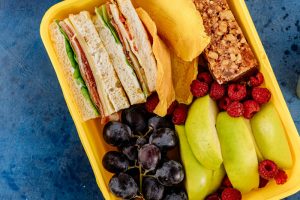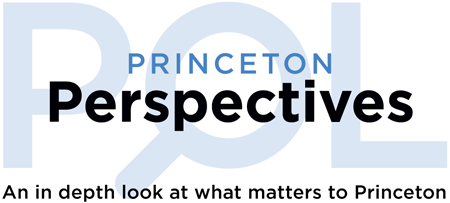 During the COVID-19 pandemic, one of the most quietly revolutionary things our country did was make school meals free for all children—no forms, no shame, just a warm meal for every student. That policy, born of crisis, is one we should keep not just for its impact on hunger, but because it’s a smart investment in our future—and a rare place where Americans across the political spectrum can come together. Whether Mikie Sherrill, Jack Ciattarelli or someone else gets elected as the next governor of NJ in November, perhaps they could champion this with the Senate and Assembly and make it happen.
During the COVID-19 pandemic, one of the most quietly revolutionary things our country did was make school meals free for all children—no forms, no shame, just a warm meal for every student. That policy, born of crisis, is one we should keep not just for its impact on hunger, but because it’s a smart investment in our future—and a rare place where Americans across the political spectrum can come together. Whether Mikie Sherrill, Jack Ciattarelli or someone else gets elected as the next governor of NJ in November, perhaps they could champion this with the Senate and Assembly and make it happen.
In New Jersey, the urgency of this issue is clear. More than 263,000 children in our state are food insecure, meaning they don’t consistently get enough to eat. Hunger doesn’t just happen in far-off places—it lives in our towns, in our classrooms, and in the growling stomachs of students who can’t focus because they missed breakfast. It’s hard to learn when you’re hungry. If you have heard an educator say “Maslow before Bloom” that is exactly what they mean. In order to pay attention, engage, and stay motivated, basic physical needs must be met first. We have all experienced trying to focus in a meeting when we do not feel well. What children face when they are hungry is no different.
 That’s why school meals matter. They are more than just calories—they’re a basic building block for learning, behavior, and long-term health. During the pandemic, when school meals were made universally free, participation increased, and schools saw fewer issues with student behavior and concentration. Kids came to class fed, focused, and ready to learn.
That’s why school meals matter. They are more than just calories—they’re a basic building block for learning, behavior, and long-term health. During the pandemic, when school meals were made universally free, participation increased, and schools saw fewer issues with student behavior and concentration. Kids came to class fed, focused, and ready to learn.
But today, that universal access is slipping away. While New Jersey has made strides—including legislation expanding eligibility to families earning up to 224% of the federal poverty line—millions of children nationwide, and tens of thousands in New Jersey, have once again been pushed back into a system that asks families to prove they are “poor enough” to deserve food.
According to U.S. News & World Report, 8% of Princeton Public School students currently receive free or reduced lunch. Their families must confirm they meet the federal income guidelines, then need to complete and submit an application each year. This means paperwork for schools, stigma for students, and missed meals for those who fall just outside the line. Imagine being a 10-year-old whose parents make slightly too much to qualify for assistance, but not enough to afford lunch every day. That child learns two lessons: how to hide hunger, and that dignity is reserved for those who can afford it.
We can—and must—do better.
 New Jersey is currently considering legislation that would make free school meals universal by 2028. It’s an ambitious and commendable goal. The cost is not trivial—estimates place it around $500 million annually—but it’s a small price to pay for what we gain: healthier children, stronger schools, and a more equitable society.
New Jersey is currently considering legislation that would make free school meals universal by 2028. It’s an ambitious and commendable goal. The cost is not trivial—estimates place it around $500 million annually—but it’s a small price to pay for what we gain: healthier children, stronger schools, and a more equitable society.
But there’s another crucial piece we must not forget: the meals must be healthy. To be sure, some of you read a line that I wrote above that said that during the pandemic “Kids came to class fed, focused, and ready to learn” and rolled your eyes. The truth is food is important, but the quality of the food is also key.
Free meals are not enough if we’re handing out highly processed, sugar-laden foods that do little to nourish our kids. Just as we fight hunger, we must also fight the obesity epidemic, type 2 diabetes, and other chronic illnesses that begin in childhood. Not to mention the sugar high and then crash that so many students likely face after they have the all carb and sugar breakfasts that we serve in schools. This, no doubt, leads to difficulty concentrating and regulating behavior.
These conditions now affect millions of American children—not just in low-income communities, but across all demographics. What we feed our children in schools is shaping the next generation’s health.
This is where we can find common ground. No matter your politics, the idea of “making America healthy again” resonates. Conservatives talk about personal responsibility and national strength. Progressives focus on equity and access. But everyone agrees that strong, healthy kids are the foundation of a strong, healthy country.
 Healthy school meals are not about banning pizza or mandating kale. They’re about ensuring that the standard lunch plate includes real fruits and vegetables, whole grains, lean proteins, and less added sugar. In Princeton Public Schools, that commitment comes to life through a strong wellness policy, a dedicated food service provider, and the work of the Princeton School Gardens Cooperative. Since 2005, the Cooperative has connected students, staff, and families to hands-on food literacy through programs like Edible Gardens, Garden State on Your Plate, and PPS Cooks+Gardens. These initiatives don’t just feed students—they empower them to understand where their food comes from and how it fuels their bodies and minds. As the Cooperative prepares to celebrate its 20th anniversary in 2025, its mission is more relevant than ever: to grow a healthier future for every student, from the soil up. If we expand the meal programs like this across the state, we could ensure every student—from Newark to Cherry Hill— has a real fair shot at building lifelong healthy eating habits and learning how those habits can enhance their overall well-being.
Healthy school meals are not about banning pizza or mandating kale. They’re about ensuring that the standard lunch plate includes real fruits and vegetables, whole grains, lean proteins, and less added sugar. In Princeton Public Schools, that commitment comes to life through a strong wellness policy, a dedicated food service provider, and the work of the Princeton School Gardens Cooperative. Since 2005, the Cooperative has connected students, staff, and families to hands-on food literacy through programs like Edible Gardens, Garden State on Your Plate, and PPS Cooks+Gardens. These initiatives don’t just feed students—they empower them to understand where their food comes from and how it fuels their bodies and minds. As the Cooperative prepares to celebrate its 20th anniversary in 2025, its mission is more relevant than ever: to grow a healthier future for every student, from the soil up. If we expand the meal programs like this across the state, we could ensure every student—from Newark to Cherry Hill— has a real fair shot at building lifelong healthy eating habits and learning how those habits can enhance their overall well-being.
In fact, universal school meals and healthy food standards represent one of the best examples of policy that is both practical and moral. It streamlines school operations (no need to track eligibility or chase down lunch debt), boosts academic performance, and addresses both hunger and health in one smart, integrated way.
Opponents argue that universal meals benefit families who don’t need them. But public schools don’t charge wealthier families more for textbooks or teachers. We offer the same education to every child because we believe that’s fair and right. Why should school meals be different?
 Others worry about cost. Yet we spend hundreds of billions each year on healthcare costs related to poor nutrition. Preventing illness through healthy food is far cheaper than treating it later with medication and hospital visits. Just as we invest in reading and math, we should invest in the nutrition that makes learning possible. And, while we are at it, do we need vending machines in schools? I know there is some revenue there but is the benefit worth the cost to our children’s health?
Others worry about cost. Yet we spend hundreds of billions each year on healthcare costs related to poor nutrition. Preventing illness through healthy food is far cheaper than treating it later with medication and hospital visits. Just as we invest in reading and math, we should invest in the nutrition that makes learning possible. And, while we are at it, do we need vending machines in schools? I know there is some revenue there but is the benefit worth the cost to our children’s health?
Let’s also remember the broader economic impact. When kids eat healthy, local farmers benefit. Food service jobs are sustained. Parents can provide more healthy food at home knowing their children are fed well at school. The ripple effects are real and measurable.
The question isn’t whether we can afford free, healthy meals in our schools, it is whether we can afford not to.
So, let’s keep this idea at the forefront, so that the incoming NJ Governor takes what we learned during the pandemic and builds on it. Let’s make free, nutritious school meals a permanent part of the American promise. Let’s stop asking children to earn their place at the lunch table—and start feeding every student with dignity, health, and hope.

Tabitha Dell’Angelo is a professor and Dean of the School of Education at The College of New Jersey.
